
A trip to Puglia is a splendid painting of exotic views against Mediterranean backgrounds. It is a picture of cities with unique profiles. It is a tale of traditions, art, and nature. It is the hospitality that hugs you and makes you feel at home. It is a sensory experience that enters the spirit with the primal force of a tarantula, and it is all we recommend to enjoy a little taste of happiness.
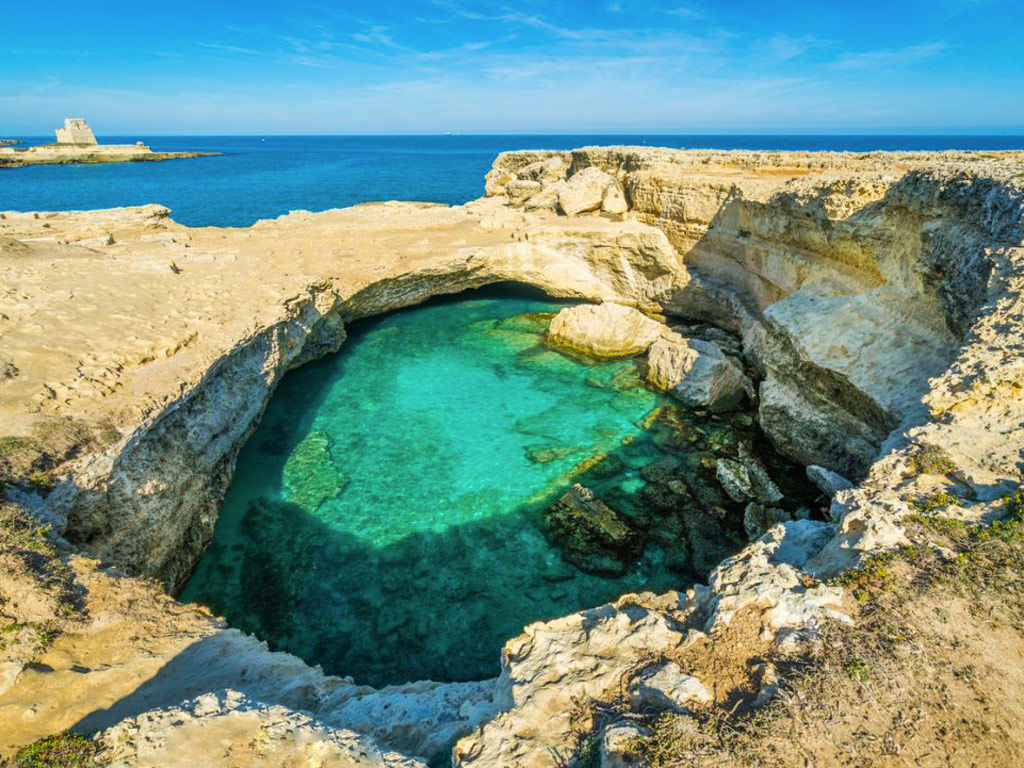
Just a ten-minute drive from Masseria Rauccio, Roca Vecchia is the ideal destination for those seeking archaeological, historical, and natural beauty. Destroyed several times, this locality shows signs of a past of devastation and tenacious rebirths: those who visit Roca Vecchia can admire the remains of the 16th-century watchtower, the ruins of the castle, and the sanctuary of Madonna di Roca. But the real pride of the area is the Grotta della Poesia, among the most striking natural pools in Italy.
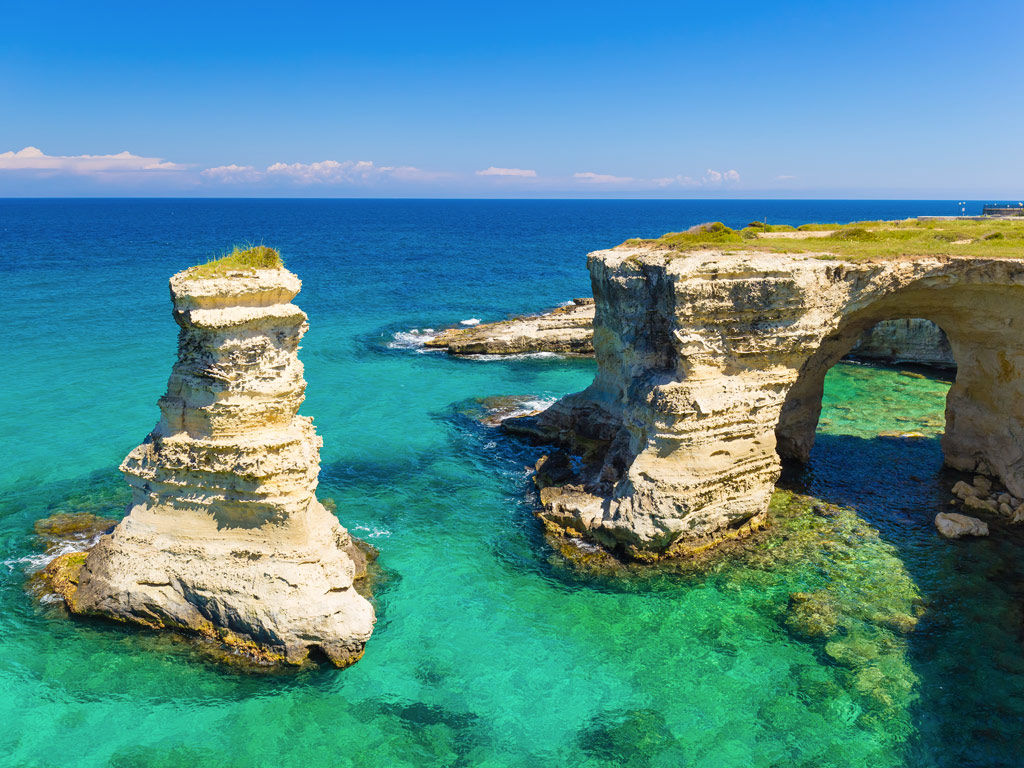
Between Torre dell'Orso and Baia dei Turchi, Torre Sant'Andrea is a delightful seaside resort that owes its fame to the unquestionable beauty of the Faraglioni, imposing limestone rock formations that stand out among the emerald hues of the sea. A short distance from the cliffs, sheltered from the wind and tides, there is a small beach of fine sand. From here, a dense pine forest, ideal for picnics and walks, develops, preserving small, unspoiled coves on the sea.
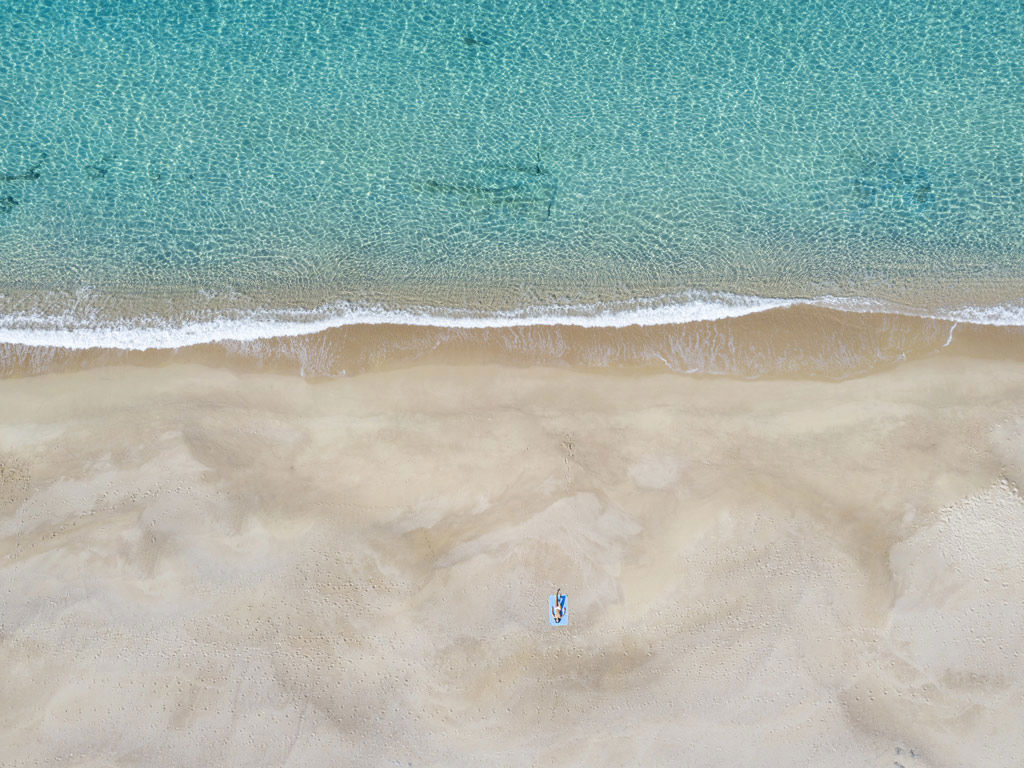
A pine forest protects and reveals a golden beach and an expanse of clear water, reached by a pleasant walk through the greenery. This is Baia dei Turchi, a small corner of paradise in Salento whose name seems to derive from the landing of Ottoman troops, which occurred in these lands in 1480. Today, the area belongs to the protected oasis of Laghi Alimini.
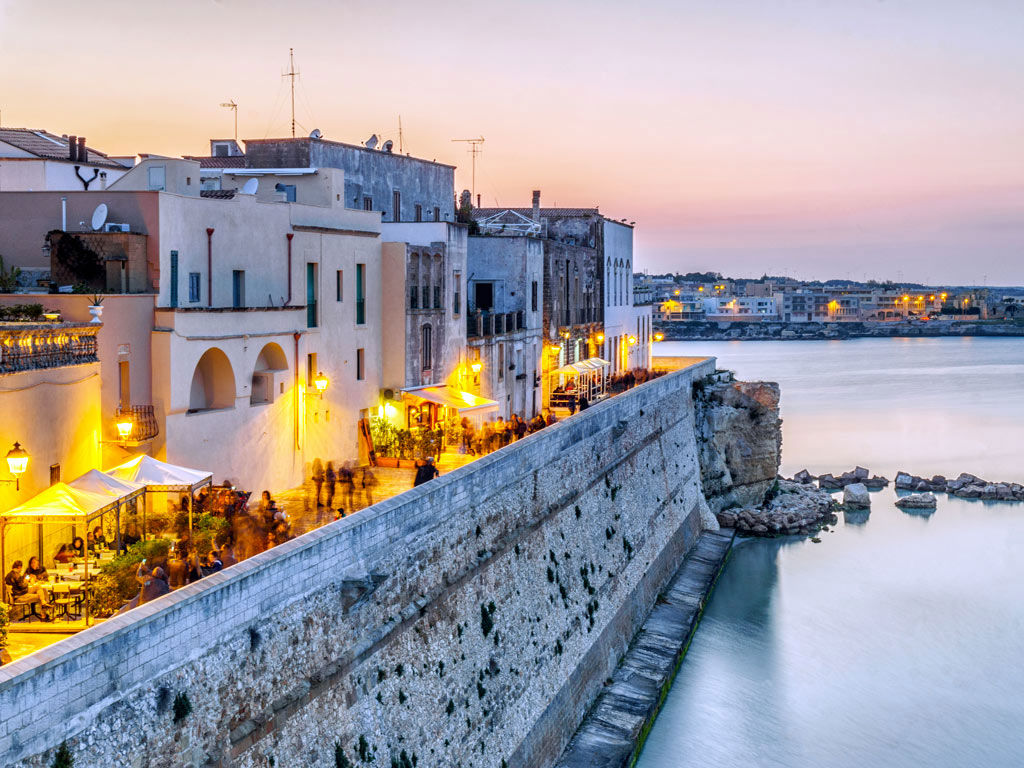
It is the easternmost town in Italy, as well as the so-called "Gateway to the East"-this is Otranto, one of Puglia's most beloved locations. Overlooking the shores of the Adriatic Sea, at a strategic point between West and East, the city was in the past the scene of clashes and occupations for the control of the area. Witness the fortified walls and castle, which still guard the heart of the town, and its maze of cobbled streets where you can get lost, discovering history, art, and breathtaking views.

Located about twenty kilometers away from Lecce, Galatina is a small jewel of the Salento area. The downtown streets reserve the discovery of a priceless historical and artistic heritage: churches, monuments, and noble palaces make the city a unique open-air museum. The culinary tradition is another of the main attractions: Galatina is, in fact, famous for the “pasticciotto leccese”, a delicacy made of short pastry and custard that has delighted the Salento area for centuries.
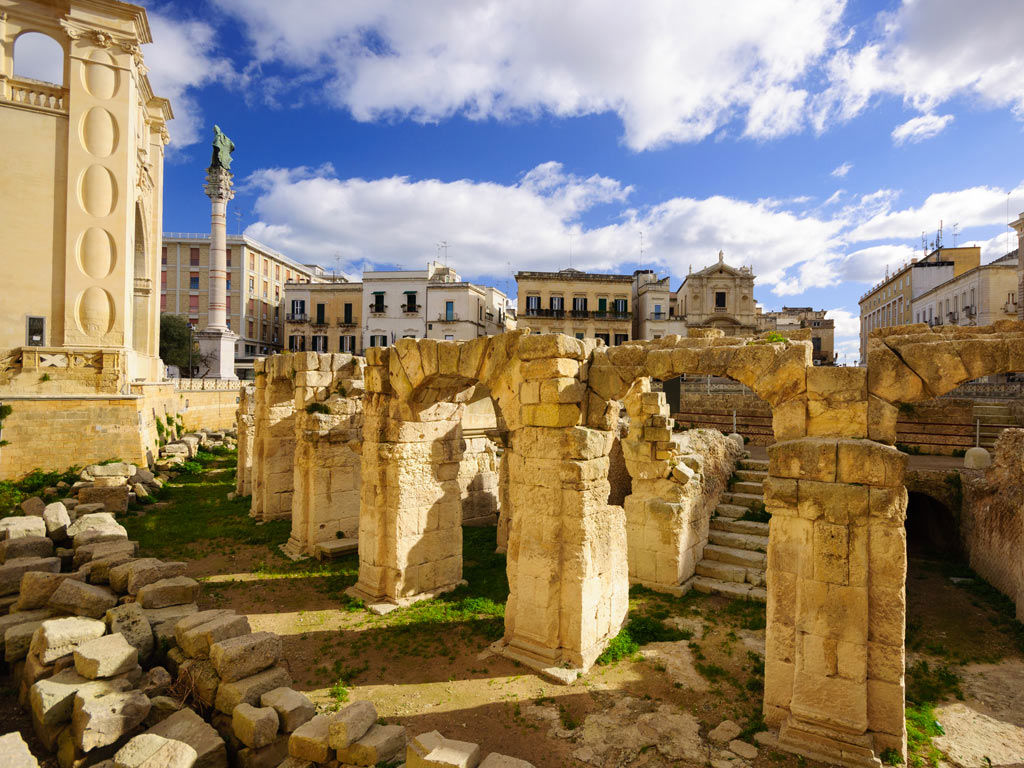
Halfway between the Adriatic and Ionian coasts, in the heart of the Salento region, Lecce enchants those who visit with its art and history. Called the Lady of Baroque, the city owes its appellation to the artistic production that characterizes most of its historic center with flamboyant shapes and the typical Lecce stone. The Cathedral of Santa Maria Assunta, the Carlo V Castle, the Roman Amphitheater, and the Basilica of Santa Croce are just some of the wonders not to be missed. But Lecce is also food and wine culture: a city tour is certainly not complete without tasting the most delicious local dishes and wines.